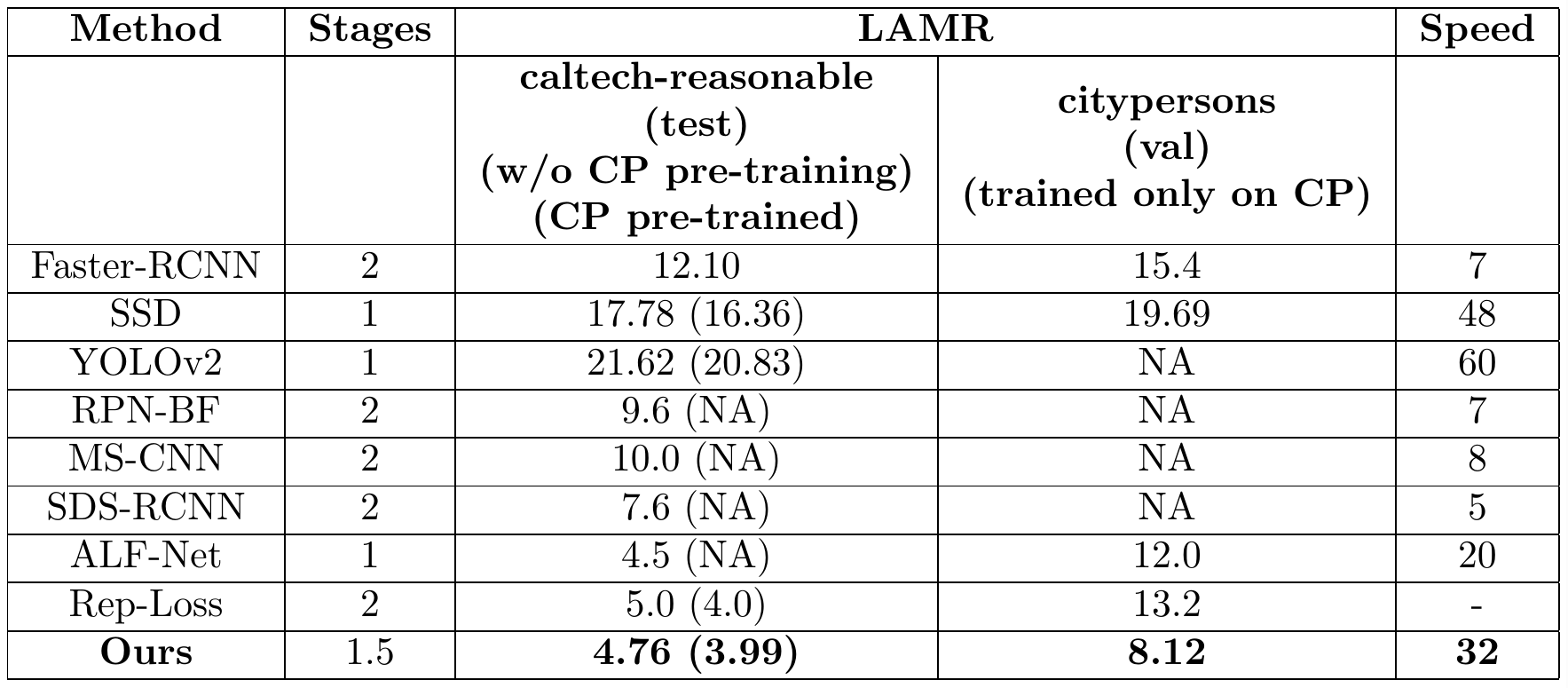Section: New Results
Handling the Speed-Accuracy Trade-off in Deep Learning based Pedestrian Detection
Participants : François Brémond, Ujjwal Ujjwal.
Pedestrian detection is a specific instance of the more general problem of object detection. Pedestrian detection plays a fundamental role in many modern applications involving but not limited to autonomous vehicles and surveillance systems. These applications as many others are safety-critical. This implies that the cost of not correctly detecting a pedestrian is very high. At the same time applications such as the ones mentioned before, are expected to be real-time. This implies that a pedestrian be detected with minimum time delay. The subject of our recent work has been to design a pedestrian detector which is capable of detecting pedestrians with a high accuracy and high speed – two traits which are known to be difficult to achieve simultaneously.
Most of the pedestrian detectors in computer vision are derived from general-category object detectors. We reflect upon its implication in terms of speed and accuracy below.
Speed-Accuracy Trade-off
Speed and accuracy of object detectors are mutually trade-off factors. Emphasis on higher accuracy usually entails intensive computations which sacrifice the detection speed. On the other hand, emphasis on higher detection speed usually leads to simpler computations which sacrifice the detection accuracy.
We have recently been able to balance this trade-off by identifying that the means of computations on anchors are a major source of the speed-accuracy trade-off. Anchors are hypothetical bounding boxes and are reminiscent of sliding windows used in earlier works on object detection. There are two distinct means of processing anchors – feature pooling and feature probing. We have recently demonstrated that feature pooling is a costlier strategy than feature probing in terms of computational cost. However, in contrast, feature pooling is a more precise means to process anchors.
We leverage this difference in our approach by utilizing feature pooling throughout in our system. However, in order to gain in terms of run-time performance, we reduce the number of anchors to be processed. This reduction does allow us to process a small number of relevant anchors with high precision.
The block diagram of our proposed approach is shown in figure 4.
We fuse the feature maps of multiple layers in order to improve the feature diversity. An increased feature diversity assists in learning from a range of hierarchical features generated by a convolutional neural network, often abbreviated as CNN. A depth-wise separable convolutional layer then further processes the fused feature map in order to reduce the number of feature dimensions. One of the prime novelties in our work is the use of pseudo-semantic segmentation. Pseudo-semantic segmentation allows one to obtain a rough estimate of the localization of pedestrians in the form of a heatmap. This step is important, as it provides us with a basis to select a small set of anchors instead of processing all the tiling anchors on the feature map. An anchor classification layer uses anchor-specific kernel sizes to classify a given anchor as positive or negative. A positive or negative anchor is characterized by the overlap between the anchor and the ground truth bounding box during training. This overlap is measured in terms of the well known intersection-over-union (IoU) metric in computer vision. The positive anchors are then pooled from, followed by classification and regression to obtain the final detection.
Results
|
Figure 5 summarizes the performance of the proposed approach vis-à-vis other approaches. The proposed approach provides significant improvements over other approaches in terms of both speed and accuracy. From figure 5 it is clear that we benefit from initial training on the citypersons data set. Moreover, we obtain the state-of-art performance on the citypersons data set, improving the existing best performing techniques by nearly 4 LAMR points.



